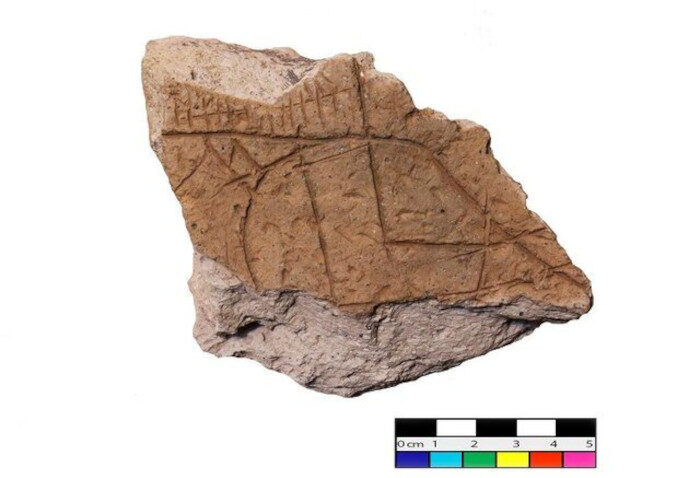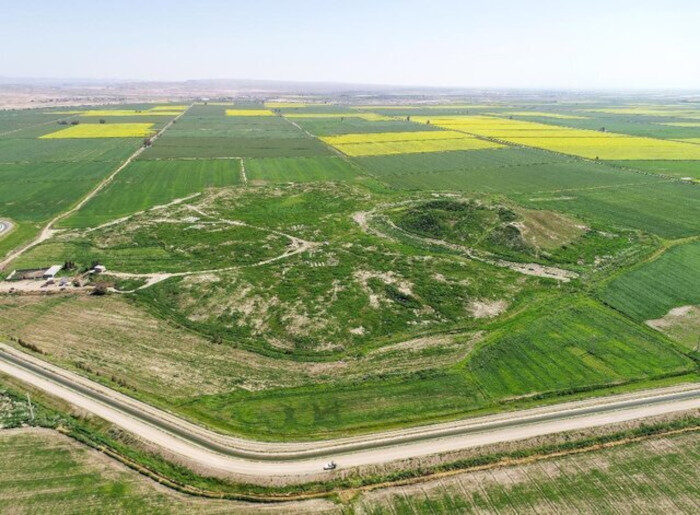
© Tehran Times
This discovery sheds light on the political and economic significance of the ancient site of Garan on the western borders of Elamite civilization.
According to
ISNA, the findings were reported during a specialized session titled "Representation of Dehloran Valley's Perspective; Based on the Discoveries of Garan Mound," organized by the Institute of Archaeology.
"Garan, situated in the Dehloran Valley within the modern province of Ilam and on the southwestern plateau of Iran, covers an area of 17 hectares. It features a prominent cone-shaped elevation in the south of the site, surrounded by several irregular mounds to the east, north, and west of the main prominence," said Mohsen Zeinivand, an archaeologist involved in the excavation.
Zeinivand highlighted the exceptional importance of Garan in archaeological studies of the region due to its organized human habitation sequence from the late ancient periods to the end of the historical era.
It transformed into the largest settlement in the second millennium BC until the late Achaemenid period, holding extraordinary significance in the archaeology of the area, the archaeologist said.
Regarding recent examinations of the site, Zeinivand explained: "Surface surveys identified numerous broken bricks with possible inscriptions. Although the inscriptions on these brick fragments were not easily decipherable due to weathering and erosion, one sample revealed partially readable words such as 'ruler,' 'son,' and 'his lord,' suggesting Akkadian language."

© Tehran TimesDehloran Valley
According to Zeinivand, the lines on the patterned bricks represent four distinct features: a river, a mountain, a dam or embankment, and irrigation channels.
In conclusion, the archaeologist emphasized that the Akkadian-inscribed brick, coupled with the patterned ones, likely offers insights into the political and economic significance of Garan on the western borders of ancient Elam.The name Elam was given to the region by others- the Akkadians and Sumerians of Mesopotamia-- and is thought to be their version of what the Elamites called themselves- Haltami (or Haltamti)- meaning "those of the high country." 'Elam', therefore, is usually translated to mean"highlands" or "high country" as it comprised settlements on the Iranian Plateau that stretched from the southern plains to the elevations of the Zagros Mountains.
Susa was formerly the capital of the Elamite Empire and later an administrative capital of the king of Achaemenian, Darius I and his successors of 522 BC. Throughout the late prehistoric periods, Elam was closely tied culturally to Mesopotamia. Later, perhaps because of domination by the Akkadian dynasty (c. 2334-c. 2154 BC), the Elamites adopted the Sumero-Akkadian cuneiform script.
Documents from the second period, which lasted from the 16th to the 8th century BC, are written in cuneiform; the stage of the language found in these documents is sometimes called Old Elamite. The last period of Elamite texts is that of the reign of the Achaemenian kings of Persia (6th to 4th century BC), who used Elamite, along with Akkadian and Old Persian, in their inscriptions. The language of this period, also written in the cuneiform script, is often called New Elamite.
Although all three stages of Elamite have not been completely deciphered, several grammatical features of the language are known to scholars. These include a plural formation using the suffix -p, the personal pronouns, and the endings of several verb forms.
The Elamite language is an extinct language spoken by the Elamites in the ancient country of Elam, which included the region from the Mesopotamian plain to the Iranian Plateau. According to Britannica, Elamite documents from three historical periods have been found. The earliest Elamite writings are in a figurative or pictographic script and date from the middle of the 3rd millennium BC.
Reader Comments
to our Newsletter